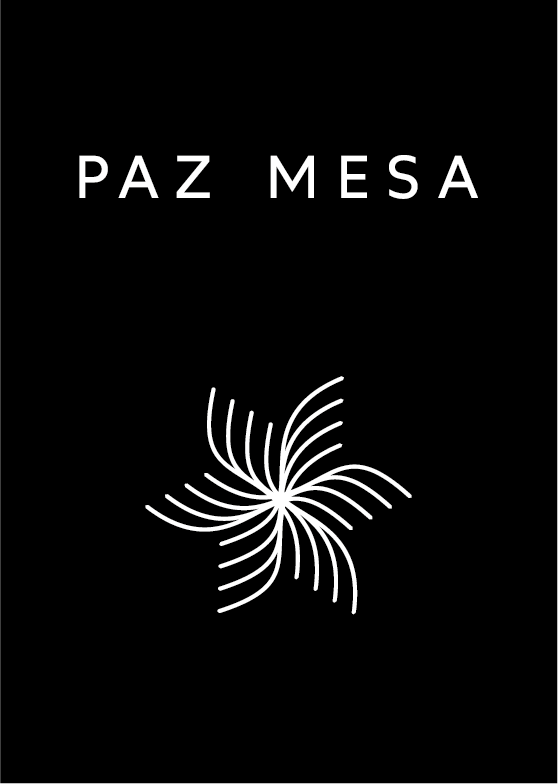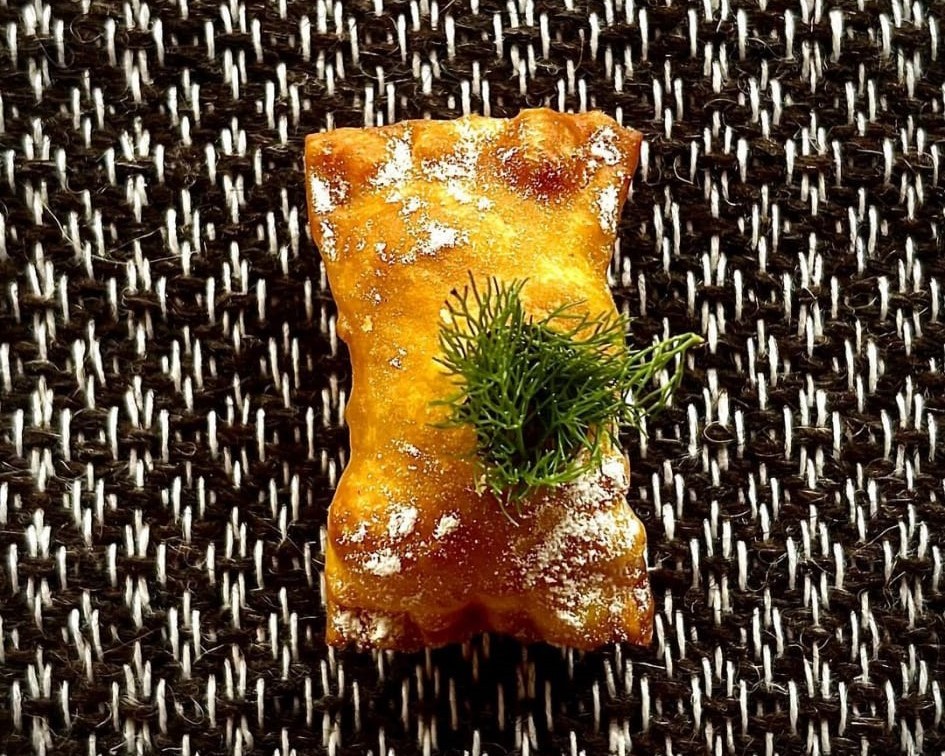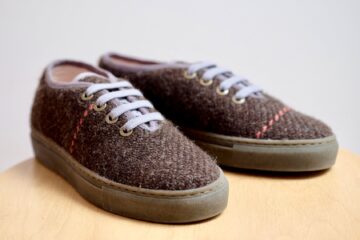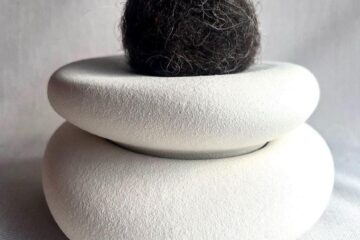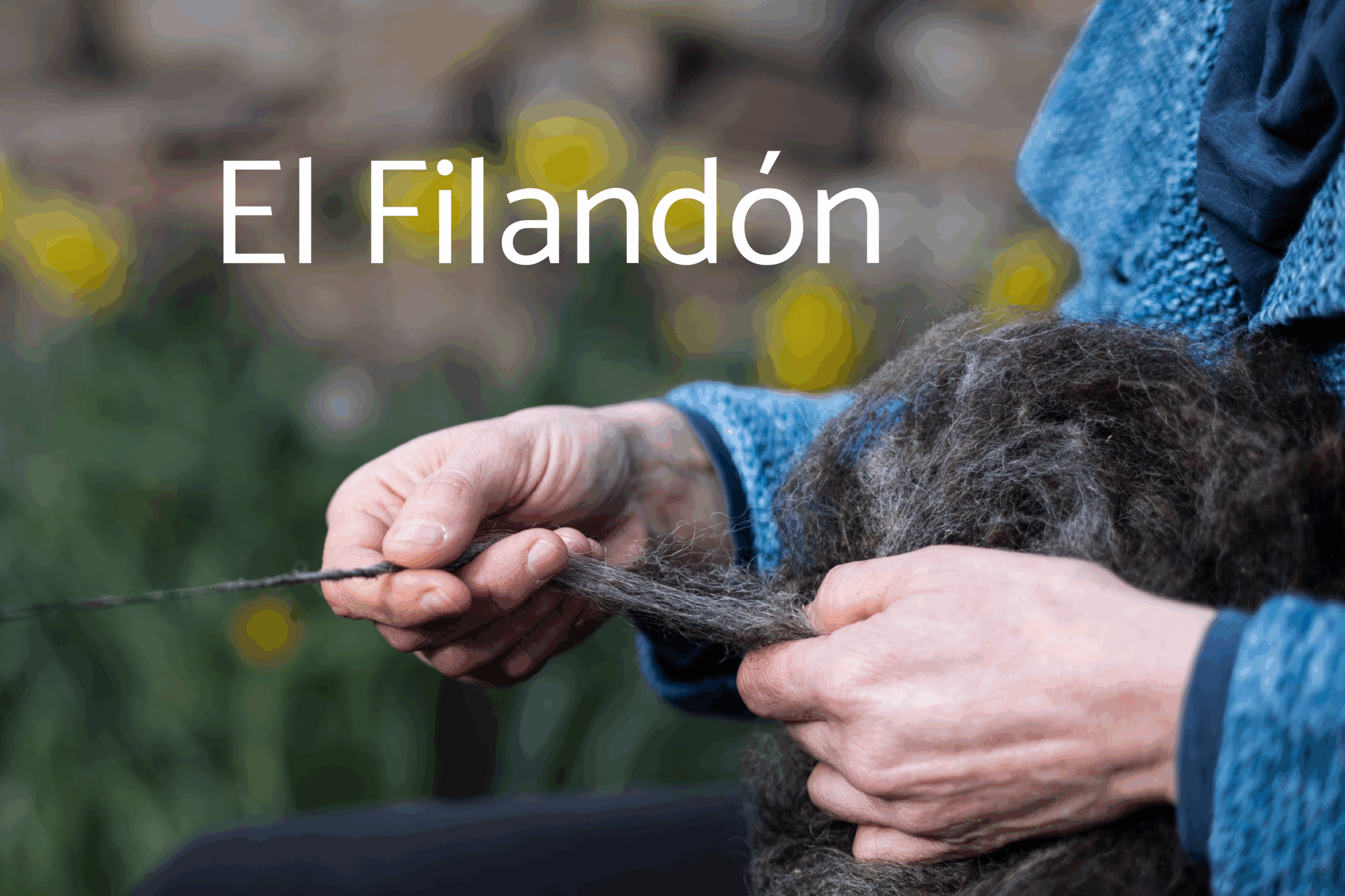When chef Pedro Martino asked me to collaborate on the presentation of one of his dishes—his contemporary take on the casadiella—I knew it was a unique opportunity to build a bridge between textile craftsmanship and signature gastronomy. In his kitchen, as in craftsmanship, there is a deep respect for origin, for process, for raw materials, and for the story behind each creation.
For this project, I designed and crafted handmade placemats using two fibers that are part of Asturias’ textile heritage: xalda sheep wool and linen. This combination is not new; it has historically been used in textiles for traditional clothing, joining the thermal and durable qualities of wool with the freshness and lightness of linen. Together, these fibers tell a story of know-how, of adaptation to the environment, and of daily life in our land.
The xalda wool—warm, rustic, and resilient—added texture and depth to the fabric. The linen, with its natural elegance and soft touch, provided the perfect contrast, creating a balance between strength and subtlety. The placemats were not merely a decorative base for Martino’s reinvented casadiella: they were an extension of the narrative, a way of presenting the dish on a canvas full of meaning.
The placemats were not merely a decorative base for Martino’s reinvented casadiella: they were an extension of the narrative, a way of presenting the dish on a canvas full of meaning.
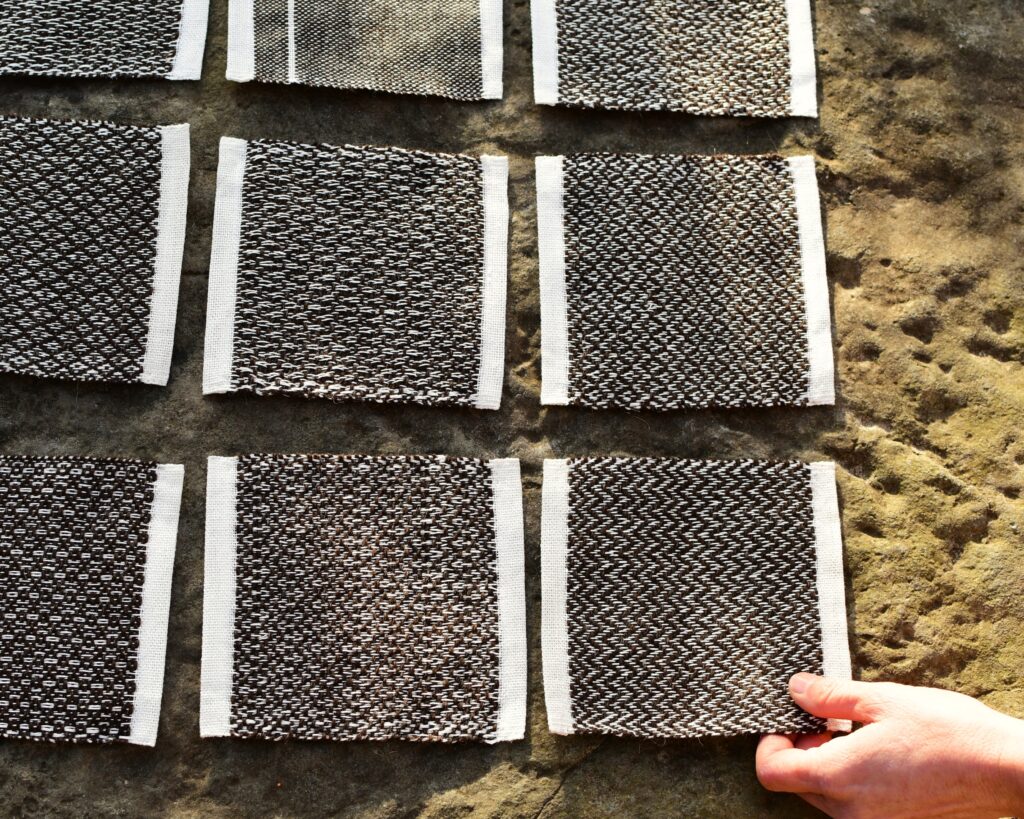
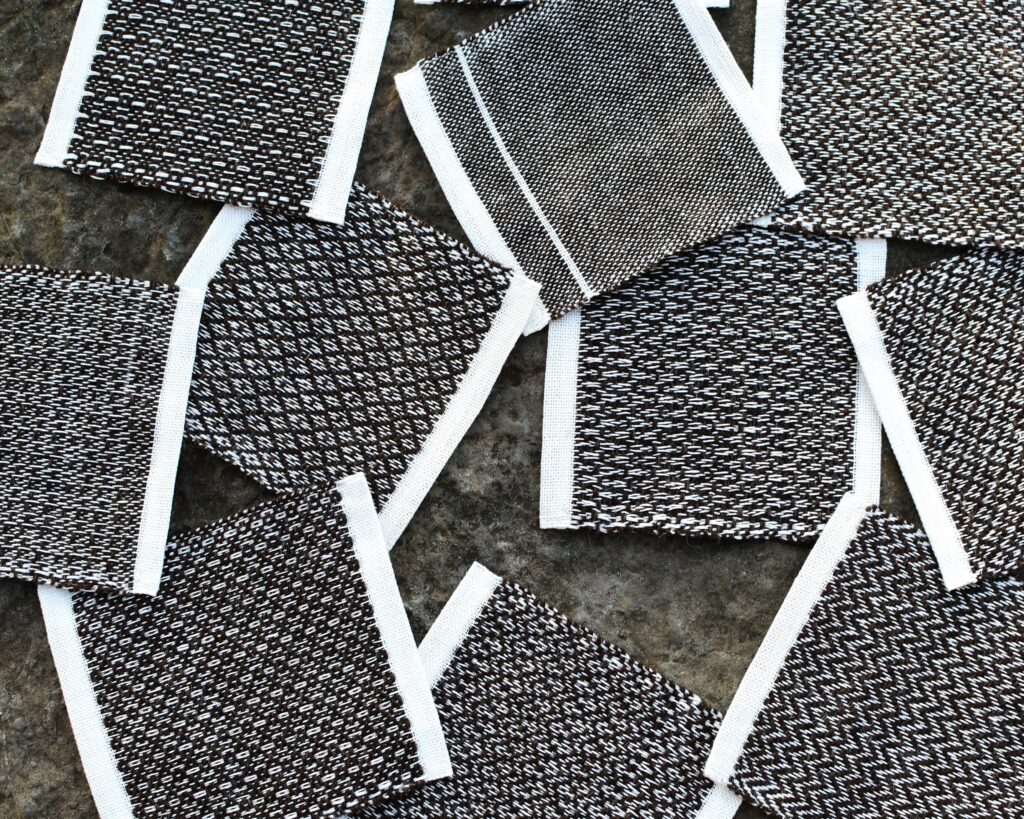
This collaboration reminded me once again how craftsmanship can engage in dialogue with other creative languages—how it can be present on a table, in a gesture, in a bite. Seeing how Pedro integrated these pieces into his presentation was moving: a synergy between cuisine and textile, between innovation and memory.
Thank you, Pedro, for trusting in my work and for giving visibility to the handmade, the local, and what is born from a craft with deep roots.
